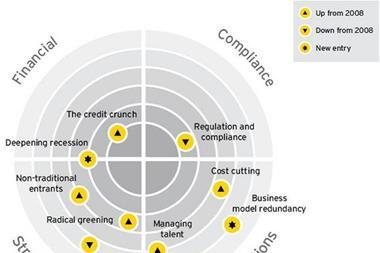The findings demonstrate a link between ERM and higher credit ratings
A new study substantiates the value of ERM and indicates that companies with it enjoy higher credit ratings.
Report Key Findings
Organizations that have embraced ERM have realized a concrete advantage in their risk management competency. The study found that 93% of organizations with formalized ERM programs in place make better risk-informed decisions—a recognized competitive advantage over those that do not have an ERM program.
Organizations that report they have an ERM program in place still fall significantly short of achieving managed or better risk maturity. The study demonstrates that, based on the ERM guidelines presented in RIMS Risk Maturity Model for ERM, only 4% of these companies have achieved a managed or better level of risk management competency in all risk competencies. This suggests that organizations may have a false sense about all that is required for an effective risk management program.
Data from the study verifies that formalized infrastructures in well-managed ERM programs embody the 68 best practice guidelines for efficient and effective risk management programs as presented in RIMS Risk Maturity Model for ERM.
The study links ERM to better business performance. There is a distinct correlation between companies that score higher on RIMS Risk Maturity assessment and companies that possess higher credit ratings. The same is true of low scoring companies that, typically, possess lower credit ratings. Hence, better managed companies in terms of ERM practices benefit from better business performance.
’In order for organizations to capitalize on value creation enabled by ERM, management—from the board room to the front line—must play an active role in the risk management process,’ said Carol Fox, ARM, senior director of risk management at Convergys Corporation and chair of RIMS ERM Development Committee.
‘This study presents empirical evidence that validates the soundness of using ERM to evaluate an organization’s future performance and its ability to meet its credit obligations,’ said Steven Minsky, chief executive of LogicManager.
The study by the Risk and Insurance Management Society (RIMS) and LogicManager was based on data collected from 564 corporate risk practitioners, gathered between December 2006 and January 2008.


















